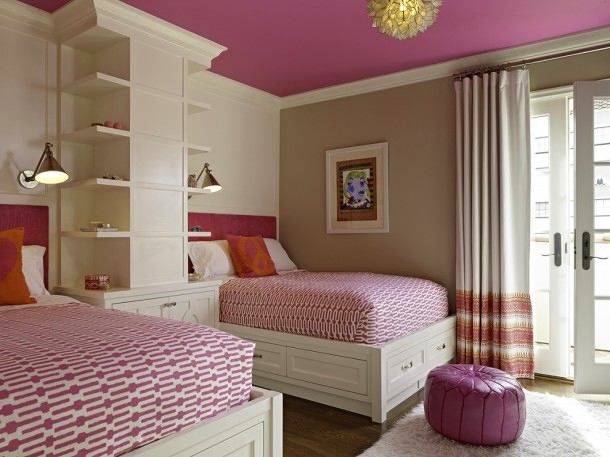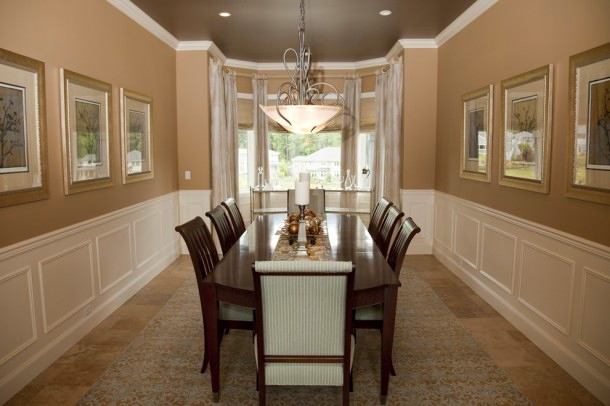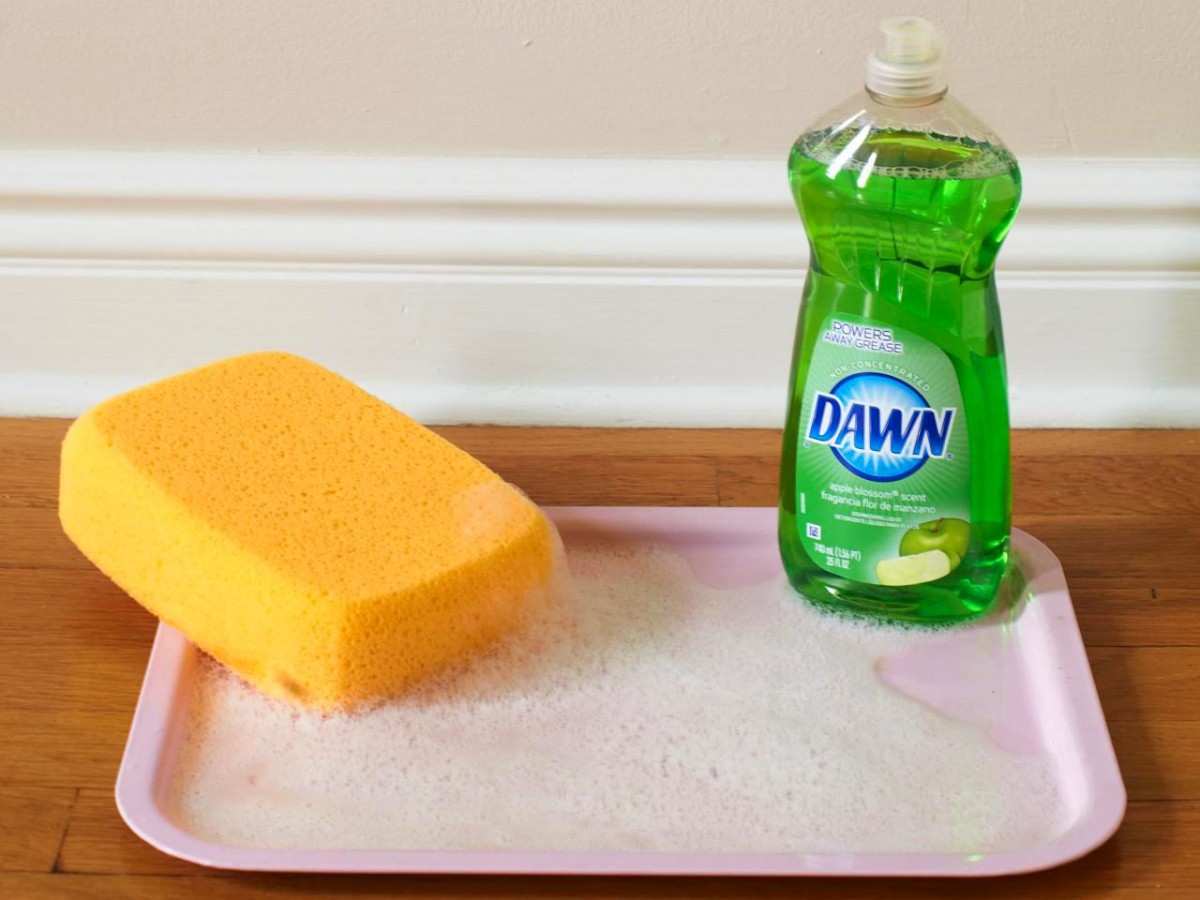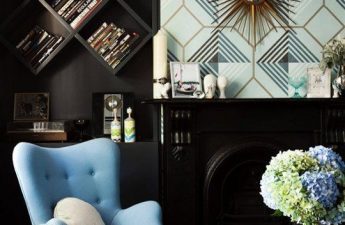Tired of the white top - dark bottom? Let's add a little color to the ceiling! What to paint best and how to do it yourself: a few practical examples and professional advice Snow white finally lost its monopoly on our ceilings. Down with the tradition! Bright or pastel, dark or light, glossy or matte, striped or checkered - the ceiling can be from now on anything. And thanks to modern materials and easy to apply colors to change the image of any of the rooms can quickly and even completely independently. 
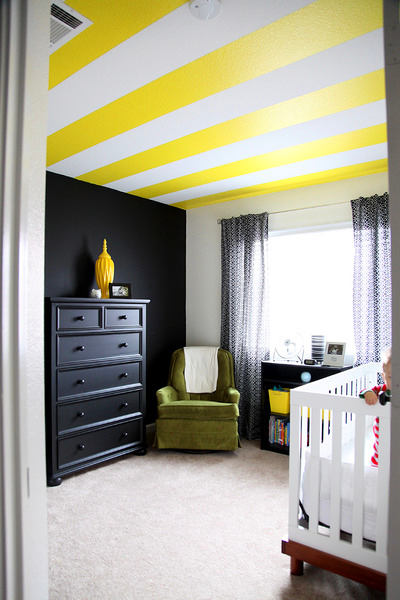 Alexey Eliseev, "Manders" - To paints forthe ceiling does not have such stringent requirements for strength and durability that we impose on paint for floors or walls, because in ordinary life we do not touch or touch it. There is something else. Ceiling paints need to reflect light evenly, so most of these paints are very matte. But this does not mean that you cannot paint the ceiling with durable wall paint and vice versa. Ceiling-mounted walls are one of the freshest and most current design trends. manders.ru
Alexey Eliseev, "Manders" - To paints forthe ceiling does not have such stringent requirements for strength and durability that we impose on paint for floors or walls, because in ordinary life we do not touch or touch it. There is something else. Ceiling paints need to reflect light evenly, so most of these paints are very matte. But this does not mean that you cannot paint the ceiling with durable wall paint and vice versa. Ceiling-mounted walls are one of the freshest and most current design trends. manders.ru
1. Choose the paint
Matte paint disguises everything that I wantedto hide: the unevenness of the ceiling, the defects of the putty and the blemishes of the painter himself. Semigloss will reveal your secrets much more frankly. A glossy, despite its spectacular appearance, underlines every flaw in the surface. Such paints painters are advised only for perfectly flat ceilings of large non-residential premises. Beginners in the painting business usually choose acrylic or latex paints - they are easy to apply, they horsch up cover small cracks and scratches and forgive beginners for many shortcomings. 

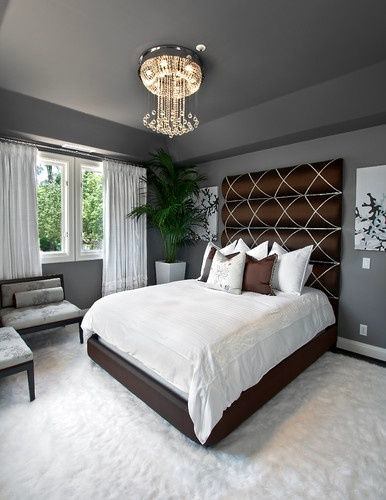
2. Preparing the tool
So, the paint is selected. Before you start, do not forget to protect the floor and furniture. The easiest way to do this is with a special film. Before painting, the ceiling is cleaned by flushing old paint or whitewash, plastering and priming. The putty and primer should be compatible with your paint. And all the cracks, irregularities and cracks between the plates are carefully ground. The final touch before painting is sanding the surface with fine sandpaper to give the texture. We look, whether all necessary at hand - and get down to business!
3. Coloring in one tone
In order to even paint the ceiling, on itYou need to "walk" a roller - two, and sometimes three layers. How many layers will be required depends on the paint - you can tell the consultants in the store. For tudnoproizvodnyh places and angles will need a brush. To impregnate the roller evenly, use a special tray.
The consistency of the paint should be fairly liquid. In order not to let it thicken, it is necessary to work quickly, but neatly. Begin usually from the side of the window, parallel to the wall on which it is located, trying to ensure that each next strip from the roller slightly overlaps the previous one. Then you need to carefully examine your ceiling, carefully walk through the poorly painted places. And proceed to the next layer. It is already applied perpendicularly. 

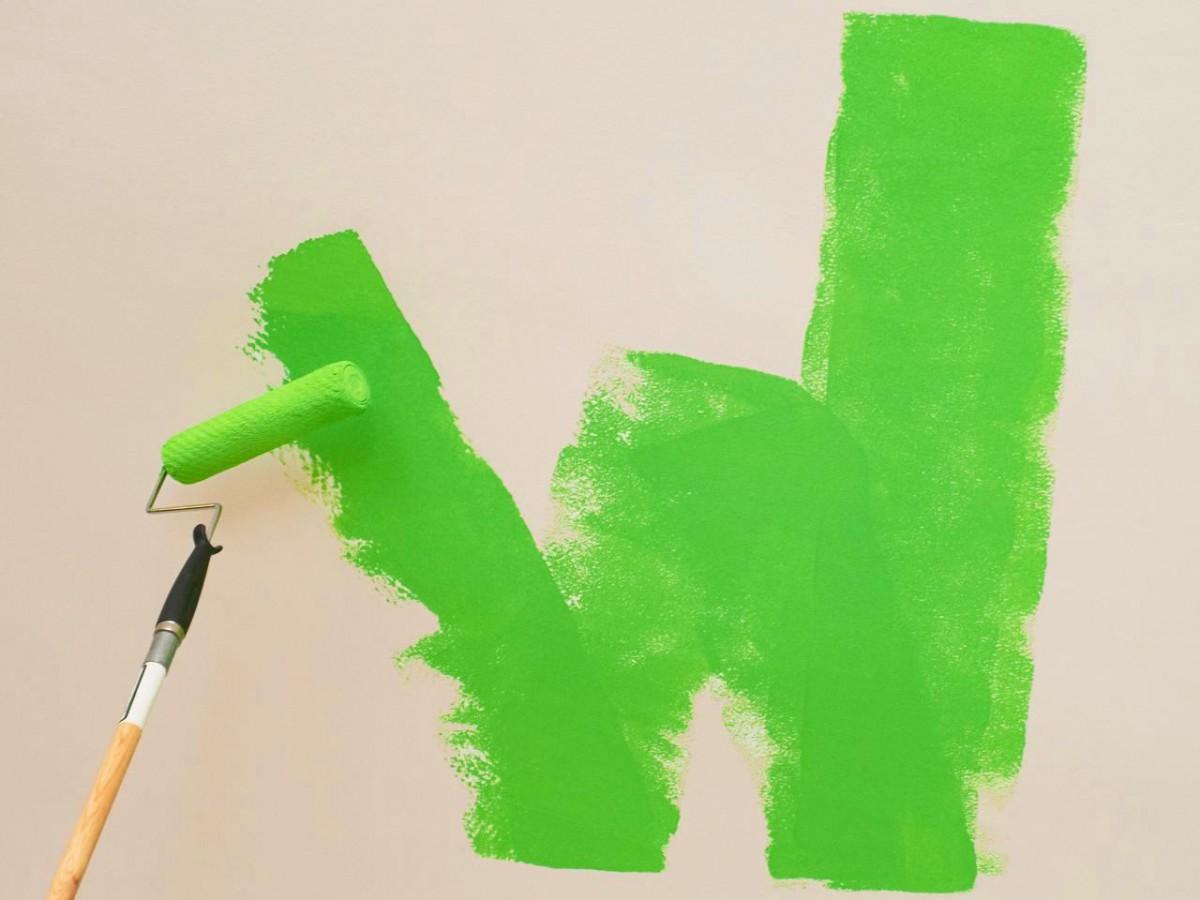

4. Strips
Striped ceiling - the idea is fashionable and interesting, butquite rare. Decorators like this pattern on walls, furniture and decor items. But the ceilings "dress" in stripes rarely, in principle because of the difficulties of execution. To stick a wallpaper on the ceiling, really, troublesome. To paint it in such a way is quite possible even for an amateur. The main thing is to choose high-quality and easy-to-use paints (for this it is better to consult the consultants), apply the marking exactly and relate the width of the bands to the width of your roller. 





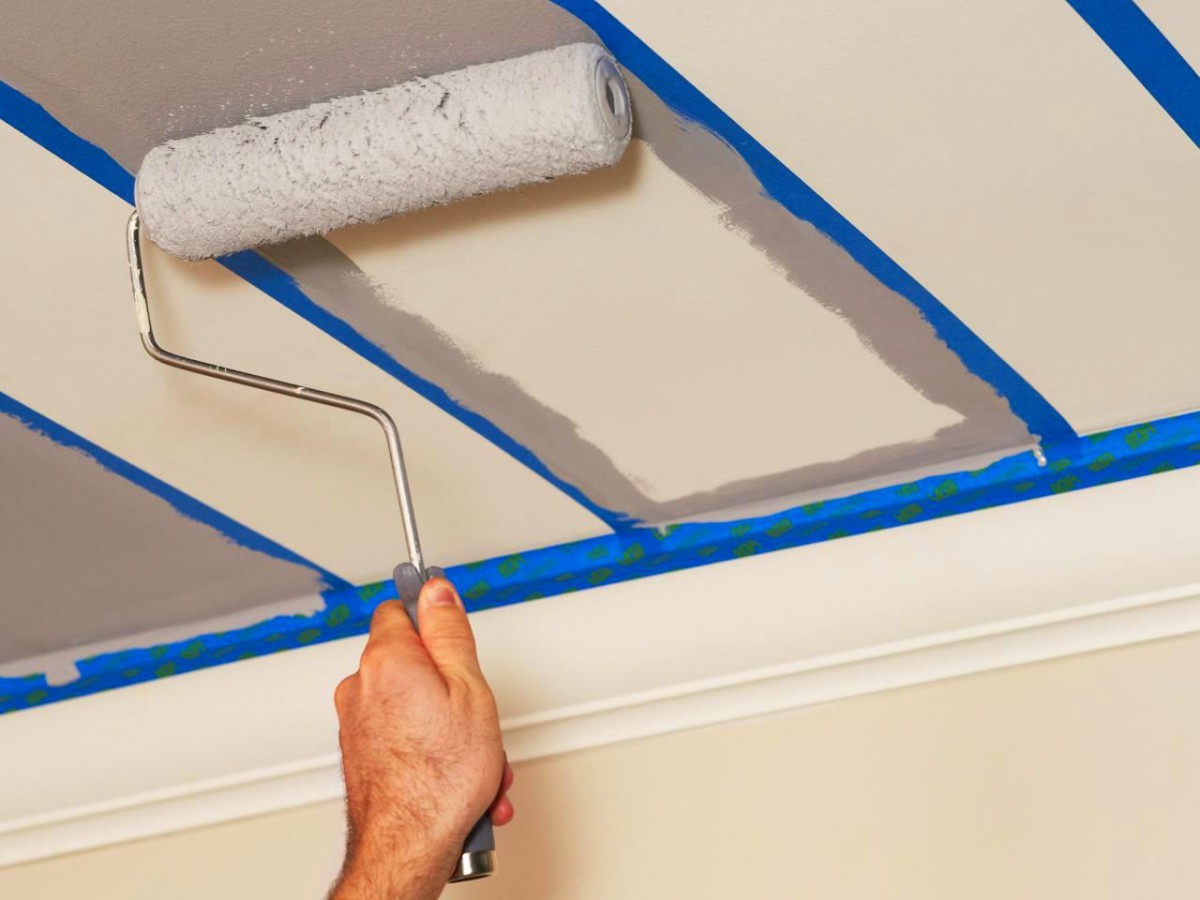

The best striped ceilings look likebedroom, bathroom and in the nursery. A small and narrow strip can help you visually expand the narrow hallway. But for large rooms - dining room or living room - over such a design you need to think carefully. In any case, first select a not very contrasting combination of colors. 

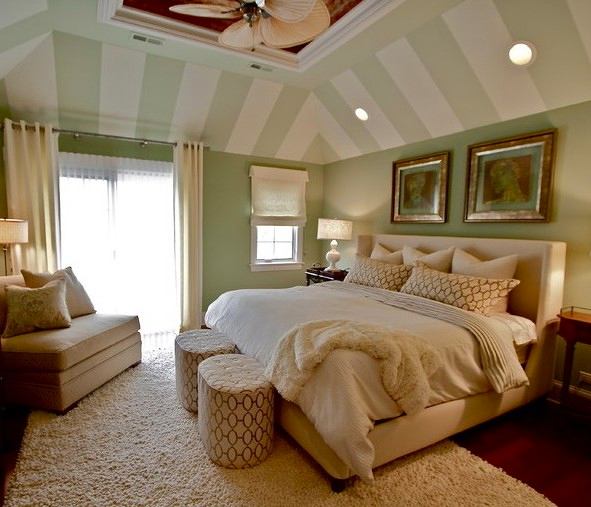
5. Graphic pattern
In the same way, you can make a beautiful graphic picture on the ceiling. However, if the room is large, you will probably need an assistant for the measurements and calculations needed to create the sketch. 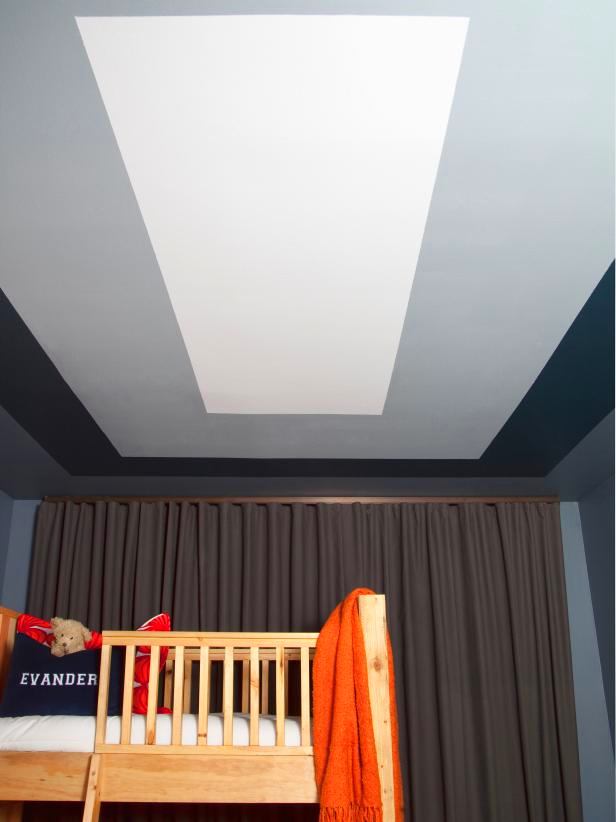

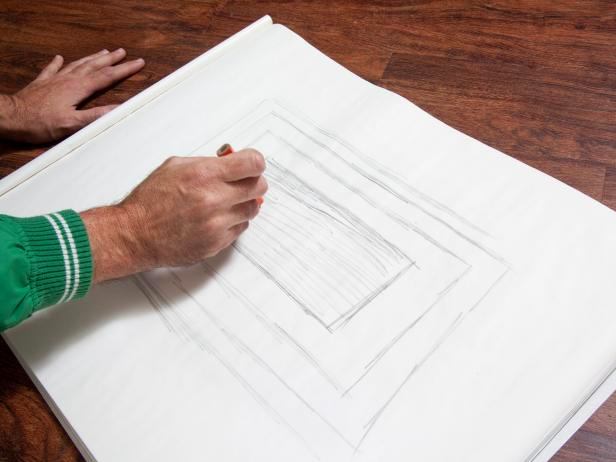

The sketch will become your cheat sheet and helpmatch the selected colors with each other. To do this, put a drop of the desired color in each segment. Paint with paint tape or adhesive tape the edge of the wall at the junction with the ceiling. Then paste the same on the inner edge of each second rectangle. Proceed to staining. Wide stripes paint with a roller, for more thin use a brush. After the paint has dried, slowly and gently remove the tape and check the clarity of the line. Flaws and irregularities can be corrected with a rare brush or thin brush. When the paint is completely dry, move the adhesive tape to the outside of each unpainted strip and repeat the procedure inside the stripes. 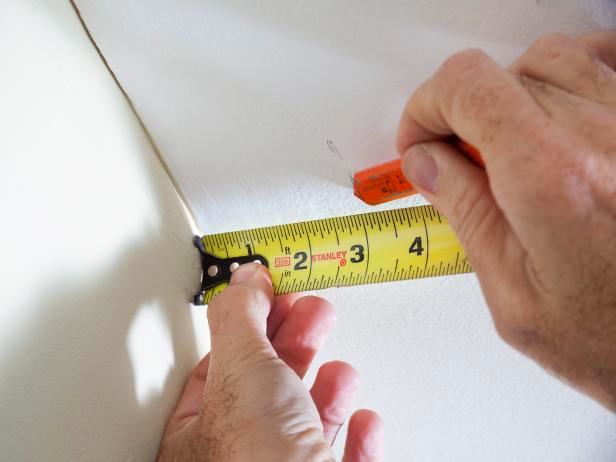



6. Stencil painting
A very interesting result can be obtained fromusing a stencil film for painting works. In fact, you can create any image, inscription or ornament in this way. But to start better with simple and use no more than two colors. In order not to be mistaken with the selection of colors, first make a color sketch on a sheet of A3 or A4 format. 




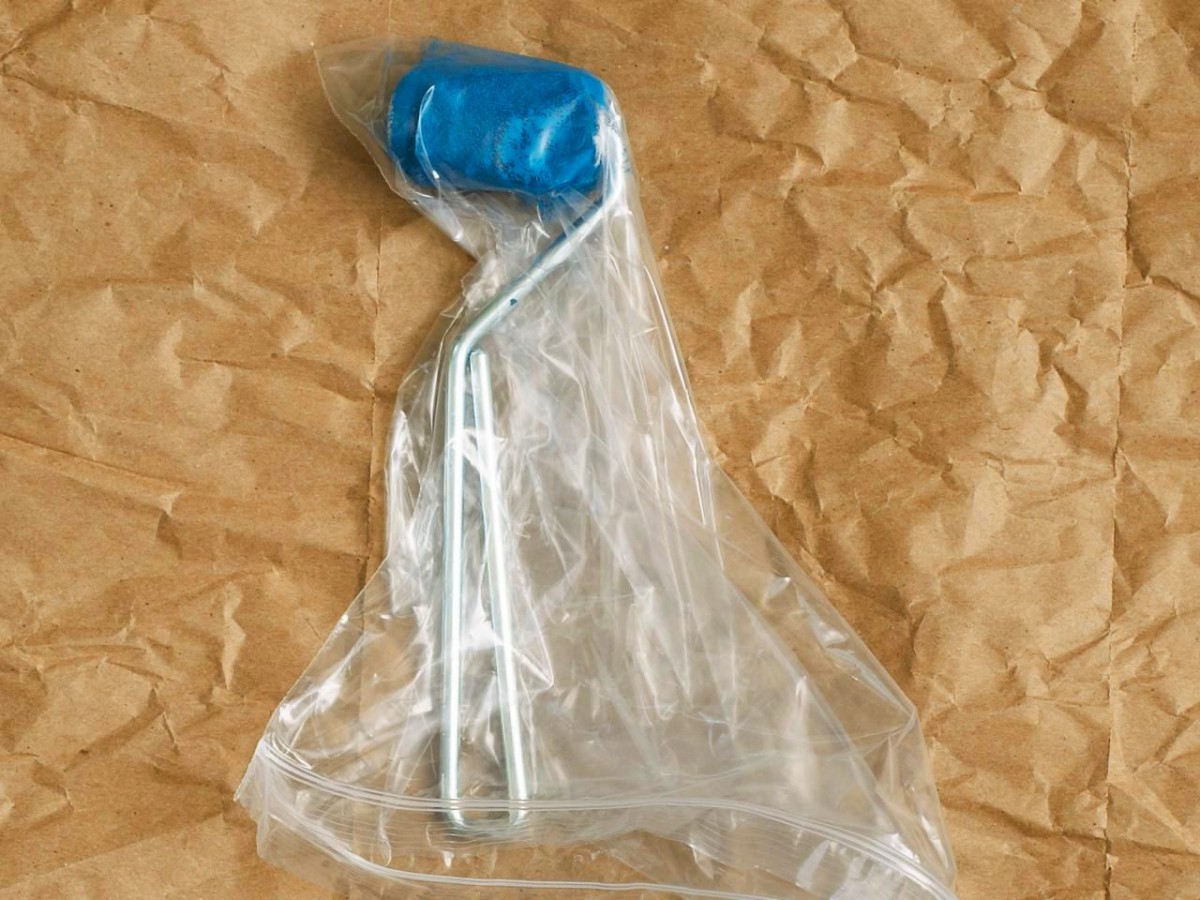
7. Color matching
When choosing a ceiling color, you need to rememberrules that apply to all other surfaces. Dark colors can visually "lower" the ceiling, bring it closer to the beholder, but they also create a cozy "capsule" space. Light, pastel colors, on the contrary, alienate and add airiness and lightness to the atmosphere. Alexey Eliseev, Manders - The color of the ceiling today can be anything. The main thing is that it matches the decor of the room and is "consistent" with the color of the walls. If you choose a color without the help of a designer, try to give preference to those in which similar pigments are present. For example, if you have red walls, choose something from a warm palette that has an ocher hue. Alternatively, you can create a mixture by adding a little of the paint with which you painted your walls. manders.ru 
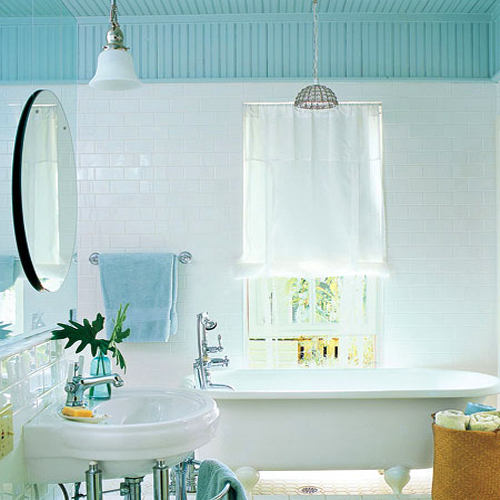

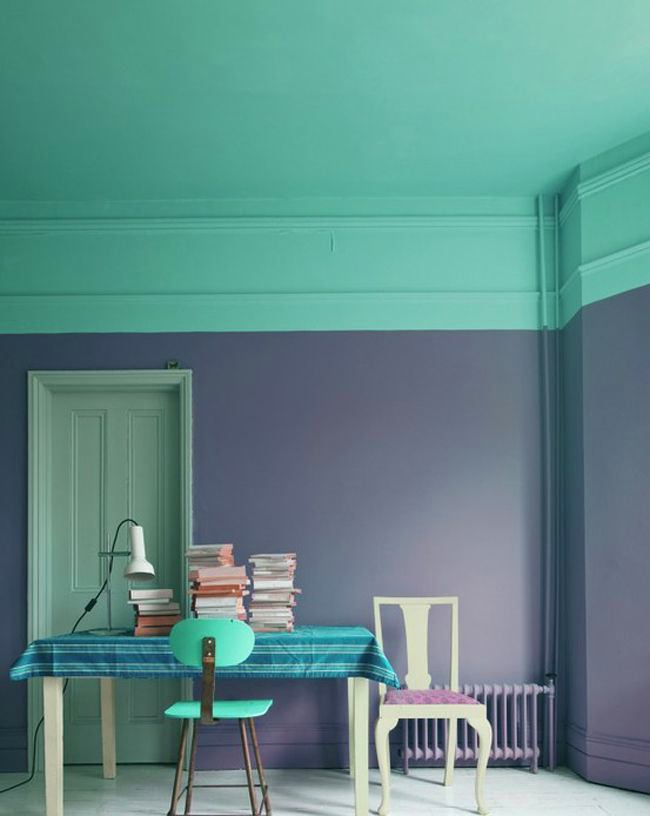
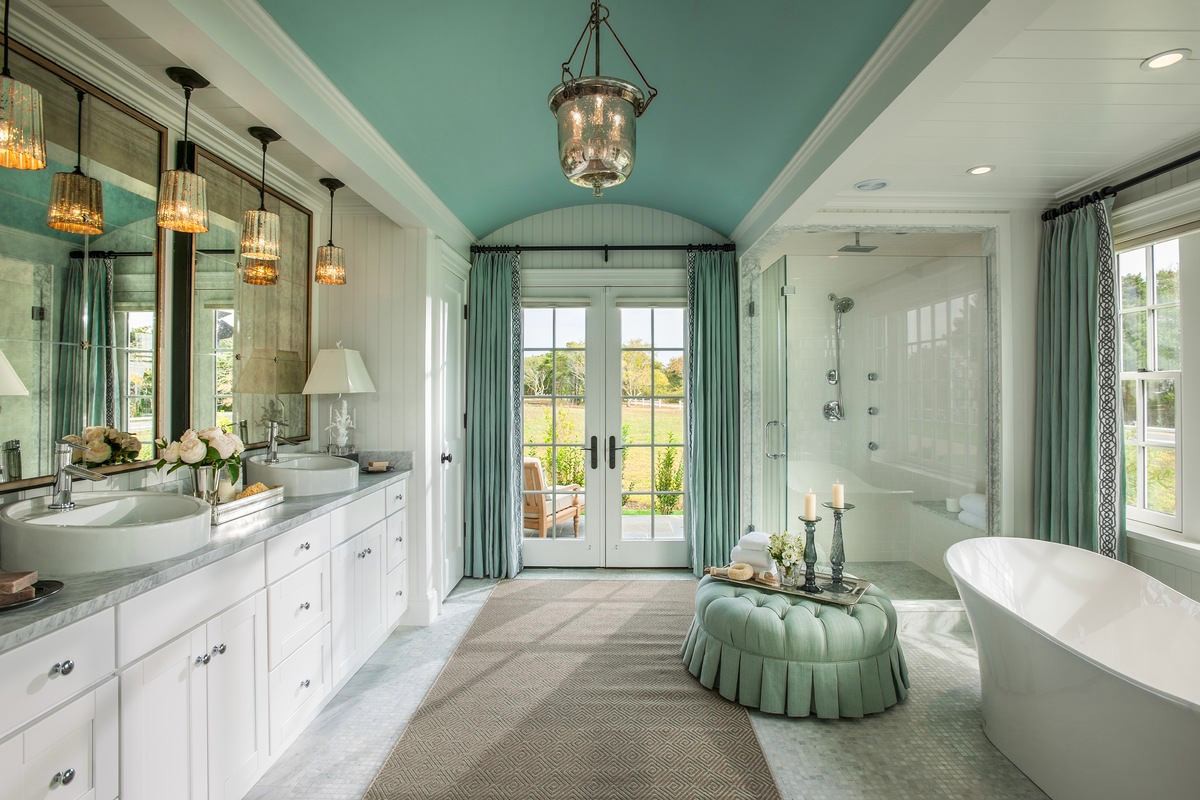
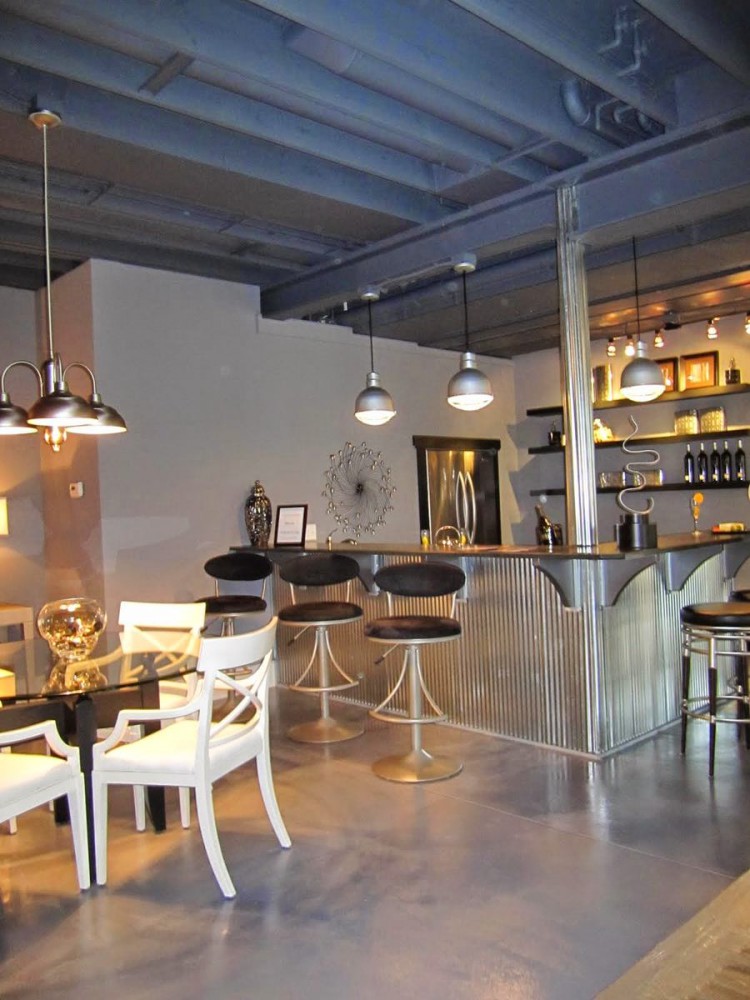 hgtv.com manders.ru pinterset.com
hgtv.com manders.ru pinterset.com
